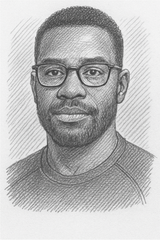The Unexpected Exercise That Cures Tennis Elbow, According to Physical Therapists
Discover a surprising exercise that physical therapists recommend as a Tennis Elbow Cure. Learn expert-backed techniques to alleviate pain and prevent future flare-ups.
https://www.youtube.com/watch?v=Ri77yRaSm4A
Did you know 95% of tennis elbow cases aren't from playing tennis? This fact shows how common elbow pain is for many people. It affects workers and athletes in different fields, making treatment tough.
Physical therapists say tennis elbow treatment is more than just rest and medicine. It affects the muscles in your forearm, causing pain in daily tasks. Knowing the causes and new treatments can help a lot in getting better.
Both athletes and office workers face the same problem: wrist strain from repetitive movements. Whether typing or swinging a racquet, the risk of tennis elbow is high. Spotting symptoms early is key to avoiding serious problems.
Key Takeaways
- Tennis elbow impacts people across various professions, not just athletes
- Repetitive wrist movements are primary contributors to elbow pain
- Early intervention can prevent chronic conditions
- Physical therapy offers effective, non-invasive treatment options
- Understanding your body's signals is key to recovery
Understanding Tennis Elbow: More Than Just a Sports Injury
Tennis elbow isn't just for athletes. It affects people from all walks of life, like painters, plumbers, and carpenters. Knowing what causes it and its symptoms can help you manage and prevent it.
What Causes Tennis Elbow Pain
The main reason for tennis elbow is repetitive arm movements that strain the elbow's tendons. Activities that involve constant gripping or twisting can cause microtrauma in the lateral epicondyle. This leads to inflammation and pain. Medical experts from Johns Hopkins say overuse is the most common cause.
Common Symptoms and Warning Signs
- Persistent pain around the outer elbow
- Weakness when gripping objects
- Increased discomfort during arm movements
- Stiffness in the elbow joint
Risk Factors and High-Risk Activities
Exercising your forearm can help prevent tennis elbow. Active professionals should know that some activities raise the risk:
- Racket sports
- Painting and construction work
- Computer-intensive jobs
- Repetitive manual labor
About 1-3% of people get tennis elbow each year. Those aged 30-50 are most at risk. Knowing these risk factors can help you prevent it and get treatment early.
The Ultimate Tennis Elbow Cure: Evidence-Based Exercise Approach
Managing tennis elbow needs a smart plan for strengthening the arm and rehabbing the elbow. Physical therapists have created exercises backed by science. These methods tackle the root causes of this painful issue.
Effective treatment focuses on exercises that strengthen tendons and cut down inflammation. Specific strengthening techniques can greatly help in recovery and stop future injuries.
- Isometric Exercises: Static muscle contractions that help reduce pain and maintain muscle strength
- Eccentric Movements: Controlled lengthening exercises that rebuild tendon resilience
- Grip Strengthening: Targeted activities to improve overall arm function
Key rehabilitation exercises include:
- Wrist extension with light weights
- Fist clenching with a rolled towel
- Gentle supination movements
Experts say to do these exercises three times a day for 1-3 months. Start with little resistance and slowly add more. Always check with a physical therapist for the right form and treatment plan.
While meds and injections help for a while, exercises are the best long-term fix for tennis elbow. By focusing on arm strengthening and careful rehab, people can manage pain and get back to full function.
Conclusion
Managing tennis elbow needs a smart plan that uses many treatment methods. Studies show that 80-90% of people get better with non-surgical treatments. Starting early and using the right is key to getting better.
Tennis elbow braces are a big help in your recovery. Research shows they can cut pain and boost grip strength right away. People using these braces often see big improvements in 2-6 weeks.
Recovery takes time and a full approach. Most people get better in 6-12 weeks. But, it's important to listen to your body and work with doctors. Getting advice from experts helps create a plan that fits your needs and stops the problem from coming back.
Don't worry, only 10-15% of tennis elbow cases need surgery. With the right exercises, braces, and advice, you can beat this tough condition.
FAQ
What is tennis elbow and who can get it?
Tennis elbow, or lateral epicondylitis, is a painful condition. It affects people who do repetitive tasks, not just tennis players. It happens when the tendons in the forearm get inflamed, leading to pain and weak grip.
What are the primary symptoms of tennis elbow?
Symptoms include sharp pain on the outer elbow and weak forearm. You might find it hard to grip things. Pain gets worse with arm movements and can spread down the forearm.
How do physical therapists recommend treating tennis elbow?
Physical therapists suggest exercise therapy. They focus on strengthening exercises. These exercises help heal the tendons, reduce pain, and improve strength. It's important to do these exercises correctly and under professional guidance.
Can tennis elbow heal completely?
Yes, most cases of tennis elbow can heal in a few months. Treatment includes exercises, rest, and sometimes braces. Getting a treatment plan from a healthcare professional can help a lot.
What activities increase the risk of developing tennis elbow?
Activities that raise the risk include sports like tennis and golf. Also, jobs like painting and typing can cause it. People over 40 and those who do repetitive tasks are more at risk.
Are there any preventive measures for tennis elbow?
To prevent tennis elbow, warm up before activities and use proper techniques. Increase activity slowly and stay physically fit. Use ergonomic tools and take breaks during repetitive tasks. Strength training and flexibility exercises can also help.
How long does it take to recover from tennis elbow?
Recovery time depends on the severity and treatment. Mild cases might heal in weeks, while severe ones can take 6-12 months. Consistent exercise, rest, and professional advice are key to recovery.
When should I see a doctor about tennis elbow?
See a doctor if elbow pain lasts more than a few weeks or if you have significant weakness. If you can't do daily tasks or if pain is severe, seek medical help. A doctor can give you a proper diagnosis and treatment plan.
Source Links
- The 7 Best Tennis Elbow Exercises For Pain Relief | Physiotherapists in Toronto | Yorkville Sports Medicine Clinic
- Elbow Pain Relief - Sterling Physical Therapy & Wellness
- Understanding Tennis Elbow: Symptoms, Diagnosis and Treatment - Phoenix Hospital Group
- Understanding Tennis Elbow: The Unseen Sports Injury - Regional Hand Center
- Exercises for Tennis Elbow: 5 Moves for Rehab
- Tennis elbow: Learn More – The treatment options for tennis elbow - InformedHealth.org
- Treatment Options, Acute Phase, Recovery Phase
- Ask the Doctors - Can acupuncture ease the pain of tennis elbow?
- Tennis Elbow Relief | Coastline Orthopaedic Treatment
👉 Join the Active Man Community
Get expert tips, workout guides, nutrition hacks, and the latest trends delivered straight to your inbox every week. No spam — just actionable insights to help you live stronger, healthier, and better.





